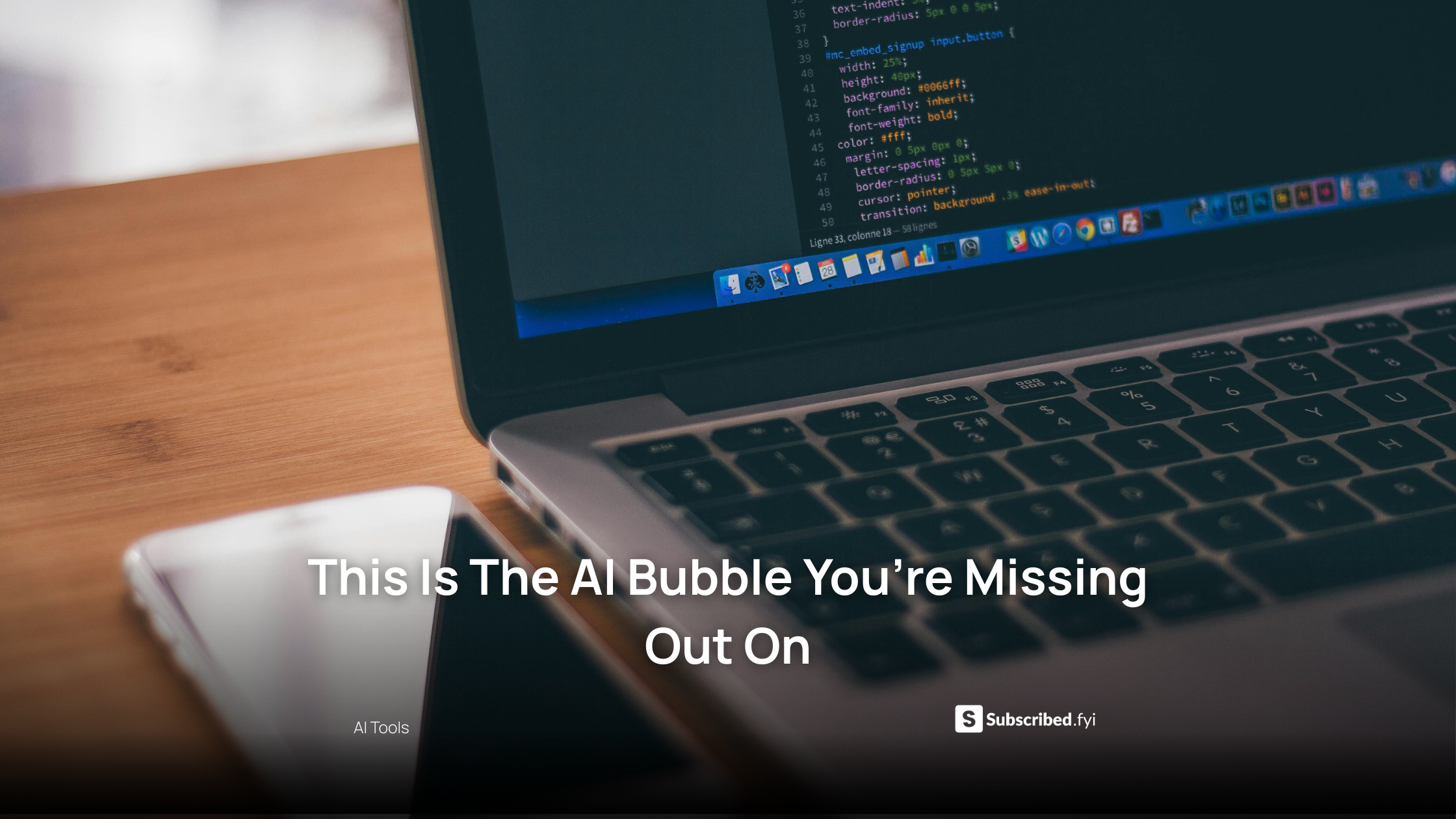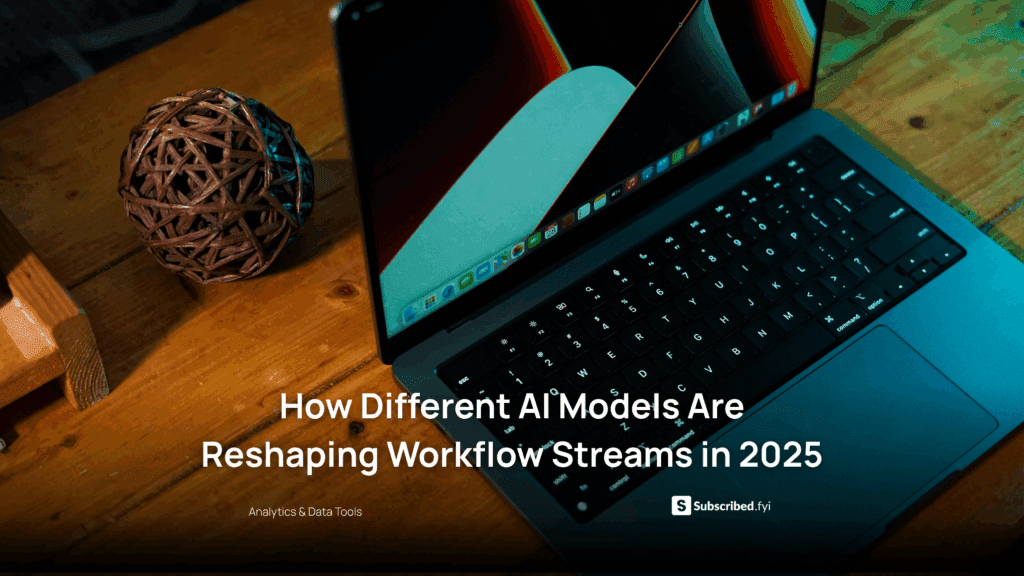This Is The AI Bubble You’re Missing Out On
- AI Image Generators Software AI Writing Assistant Popular Tools AI Tools


Why Infrastructure – Not Apps – May Be the Real Breaking Point of the AI Boom
Artificial intelligence has become the defining economic narrative of the decade. Investment is pouring in, valuations are soaring, GPU demand is breaking records, and every major enterprise is racing to integrate AI into its workflows. But beneath the headlines, a different kind of bubble is forming – one that few people outside utilities, data-center operators, and macro-analysts are talking about.
According to reporting from Business Insider, the U.S. power grid is now receiving historic levels of data-center load requests driven by projected AI needs, in some regions, demand forecasts have surged by more than 700 gigawatts, a scale multiple experts say is “mathematically impossible” to build in time. While AI model adoption is real and accelerating, the infrastructure required to fuel the boom is becoming a potential flashpoint for instability.
Meanwhile, Forbes argues that we’re not in a classic tech bubble, because the investments being made are deeply infrastructural, more comparable to railroads or electrical grids than dot-com websites. Yet even Forbes admits: just because the foundation is real doesn’t mean the pacing is sustainable. Overbuilding, misallocation, and “optimistic fantasy scenarios” remain serious risks.
And now, new signs are emerging that this bubble is not about hype, but about capacity, capital expenditure, and structural limits.
The Hidden Bubble: Infrastructure, Not Intelligence
Most people think the AI bubble – if one exists – is caused by:
-
runaway valuations
-
VC hype
-
model overpromises
-
corporate FOMO
But analysts increasingly believe the real bubble is forming underneath the models.
1. Power Grid Load Projections Are Detached From Reality
Utility operators told Business Insider that dozens of AI-linked data-center requests are:
-
duplicated
-
speculative
-
over-inflated
-
placed by companies hedging future footprints
This means utilities are planning for loads that may never materialize, while overestimating real demand by several multiples.
2. Data Centers Are Being Built Faster Than They Can Be Powered
The NPR investigation found that U.S. regions are already hitting power allocation constraints – even before the next wave of GPUs is delivered.
Some data-center projects are on hold because there is physically no electricity left to distribute.
3. GPU Prices and Supply Create Structural Fragility
The AI boom’s backbone – chips – remains concentrated in a tiny part of the supply chain. If the supply falters (delays, political tensions, export controls), the entire AI stack experiences operational shock.
As CNN reported during coverage of NVIDIA earnings, analysts are questioning whether demand is beginning to plateau – or whether revenue growth is being pulled forward unsustainably.
(source)
4. Peter Thiel’s Warning: The Industry May Be “Utterly Screwed”
In a widely discussed breakdown, Peter Thiel argued that the AI sector’s economic model is fundamentally misaligned – the cost of compute may exceed the value of output for many business applications.
(Medium analysis)
If true, the bubble isn’t speculative, it’s structural.
The AI Bubble Nobody Expected: A Capacity Mismatch Bubble
Unlike past bubbles driven by retail speculation or consumer over-optimism, the AI bubble is being built by:
-
power utilities
-
hyperscalers
-
infrastructure funds
-
cloud platforms
-
chip manufacturers
-
government subsidies
This makes the potential impact far broader.
Why This Bubble Is Different
Unlike dot-com stocks, infrastructure cannot unwind quickly. If demand projections collapse or flatten:
-
utilities are stuck with multi-billion-dollar expansion plans
-
cities are left with half-built campuses
-
hyperscalers absorb stranded assets
-
power grids bear long-term costs
-
AI companies face margin compression
And enterprise buyers, especially SaaS companies, get caught in the crossfire when compute prices fluctuate.
A New Layer: The Workflow Bubble
Beyond infrastructure, there’s another bubble forming quietly:
the workflow bubble.
SaaS companies are restructuring entire processes around assumptions of:
-
unlimited compute
-
perpetually cheaper inference
-
rapidly improving model intelligence
-
stable supply chains
-
predictable model pricing
But multiple reports, including Forbes and NPR, suggest these assumptions may become fragile.
If compute costs rise or model performance plateaus, entire workflows, product roadmaps, or automation strategies could become economically nonviable.
This is the bubble SaaS teams really need to track.
Why This Matters for SaaS Product Managers (More Than Anyone)
Product managers are now building features on top of AI capabilities that rely on:
-
real-time inference
-
multi-modal context
-
long-horizon reasoning
-
massive context windows
-
cheap compute
But what happens if:
-
inference costs triple?
-
model pricing shifts to usage-based billing everywhere?
-
token allowances tighten?
-
new licensing restrictions hit LLMs?
-
compute shortages limit throughput?
Your entire product experience could destabilize, not because the model failed, but because the infrastructure bubble popped upstream.
The Three Signals That the AI Bubble May Be Approaching a Pressure Point
Analysts tracking macro-infrastructure trends point toward three converging signals that make the AI boom uniquely vulnerable, not because AI isn’t real, but because its delivery engine may be overstretched.
1. Demand Forecasts Are Built on Cascading Assumptions
Utilities plan power loads based on projections submitted by data-center operators.
Data-center operators plan those projections based on hyperscaler contracts.
Hyperscalers base capacity expectations on AI demand models provided by… the AI companies themselves.
When every layer forecasts based on the layer above, small exaggerations turn into systemic inflation.
This is exactly what Business Insider’s reporting uncovered: multiple regions forecasting exponential demand curves that senior grid engineers call “optimistically detached from physics.”
2. Revenue Models Aren’t Scaling With CapEx
NPR’s analysis of OpenAI, NVIDIA and cloud-provider revenue cycles found a worrying divergence: infrastructure spending is doubling faster than monetization.
This implies a structural mismatch:
-
revenue curves → linear or slightly exponential
-
infrastructure investment → violently exponential
When those curves diverge long enough, a correction becomes mathematically inevitable.
3. Market Psychology Is Shifting
CNN reported that even after record earnings, NVIDIA’s stock dipped because analysts questioned whether we’ve hit peak enthusiasm.
In tech markets, the top often forms not at “bad news”, but when “immaculate good news” starts generating doubt.
This is the classic bubble-top signal.
What Happens If the AI Infrastructure Bubble Pops? (Realistic Scenarios)
It’s unlikely the bubble would burst in a dot-com-style crash.
This is not a hype bubble, it’s a capacity bubble.
A more realistic outcome is a multi-year supply correction, resulting in:
1. Slower GPU Deployment Cycles
If chip supply saturates or power constraints limit deployments, model progress slows.
Inference gets more expensive.
Context windows stop increasing as quickly.
Real-time multimodal models become less available.
2. AI Model Prices Go Up Instead of Down
For the past two years, the expectation has been:
“AI prices will fall dramatically over time.”
But if power, hardware, and data-center costs rise faster than efficiency gains, the opposite happens:
AI becomes more expensive to run, not cheaper.
3. Workflow Automation Assumptions Break
Entire product strategies like real-time assistant features, may become too costly at scale.
Instead of full automation, SaaS companies may revert to hybrid designs:
-
model-assisted decisions
-
lightweight inference
-
offline reasoning
-
partial-AI workflows
This is where the “workflow bubble” reveals itself.
The “Intelligence Gap”: The Bubble Thiel Warned About
Peter Thiel’s comments, covered in the viral Medium post, emphasize something deeper:
the idea that most AI companies will struggle to convert raw compute into profitable intelligence.
This gap emerges when:
-
the cost of inference > the value created per inference
-
the cost of model training > the incremental revenue growth
-
the cost of data-center buildout > the adoption curve of enterprise AI
Many SaaS product managers are already encountering versions of this:
the “cool” AI feature gets attention, but not enough revenue lift to justify compute costs.
This gap is where many mini-bubbles will quietly burst.
The Counterargument: Why This Might Still Be a Productive Bubble
Some economists and analysts, including those quoted in Forbes and the Washington Post, argue that this might be the “good kind” of bubble — like the railroad boom or the early Internet fiber-optic bubble:
-
tons of over-investment
-
tons of misallocated capital
-
tons of failed companies
-
BUT massive long-term value creation
The railroads overbuilt by 40%.
The telecoms overbuilt by 200%.
But society benefited for decades.
If the AI bubble is this kind of bubble, it may still pop — but the infrastructure it leaves behind will power future economic waves.
This is the optimistic case.
So What Should SaaS Product Managers Actually Do About This?
(High-Value, Search-Optimized Section)
1. Build AI Features Around Cost-Predictable Models
Favor models with:
-
stable inference pricing
-
clear licensing terms
-
predictable throughput
-
strong enterprise contracts
Avoid designing features that depend on experimental or volatile cost structures.
2. Introduce “AI-Fallback Modes” Into Products
If compute availability or pricing fluctuates, your product must still work.
Examples:
-
simplified inference
-
offline processing
-
human-review loops
-
smaller model back-up
-
on-device reasoning
This protects your user experience from upstream instability.
3. Track Infrastructure Dependencies Like Product Dependencies
Treat power availability, chip cycles, and data-center expansion timelines as strategic risk factors, not “industry background noise.”
This goes into your:
-
roadmap assumptions
-
quarterly planning
-
OKRs
-
user-facing reliability commitments
4. Don’t Assume Model Progress Will Be Linear
AI breakthroughs arrive in plateaus.
Your roadmap should too.
If your next major feature depends on:
-
10x cheaper inference
-
1M token windows
-
perfect multi-modal reasoning
-
real-time AGI-level planning
…you’re building on fragile assumptions.
5. Invest in Workflow Resilience, Not Just Workflow Automation
The biggest competitive advantage in 2025 is not full AI automation, it is workflow resilience:
-
processes that operate under cost pressure
-
features that work with different models
-
architectures that allow model switching
Resilience is the anti-bubble strategy.
Final Thoughts: The Bubble You Haven’t Heard About Is the One That Matters Most
AI isn’t going away.
AI isn’t a fad.
AI isn’t a traditional bubble.
But the infrastructure required to power it – the electricity, the GPUs, the land, the cooling, the water, the grids – may be scaling faster than the world can realistically support.
This is the bubble that matters.
Because if it bursts, it won’t just affect investors, it will affect product teams, engineering roadmaps, SaaS economics, and everyday workflows.
The real risk of the AI bubble is not that AI will fail –
but that the world may not be ready for the scale AI requires.
Relevant Links
-
Business Insider – AI Boom Creating Impossible Power Load Forecasts
https://www.businessinsider.com/ai-boom-bubble-power-utilities-forecasting-demand-2025-11 -
Forbes – The AI Bubble That Isn’t There
https://www.forbes.com/sites/jasonsnyder/2025/11/17/the-ai-bubble-that-isnt-there -
NPR – AI, Data Centers, and Revenue Pressure
https://www.npr.org/2025/11/23/nx-s1-5615410/ai-bubble-nvidia-openai-revenue-bust-data-centers -
Medium (Peter Thiel Analysis)
https://wlockett.medium.com/peter-thiel-just-revealed-how-utterly-screwed-the-entire-ai-industry-is-df7a6e4d5d60 -
CNN – AI Bubble Fears and NVIDIA Earnings
https://edition.cnn.com/2025/11/22/tech/ai-bubble-fears-nvidia-earnings -
Derek Thompson – How the AI Bubble Will Pop
https://www.derekthompson.org/p/this-is-how-the-ai-bubble-will-pop





